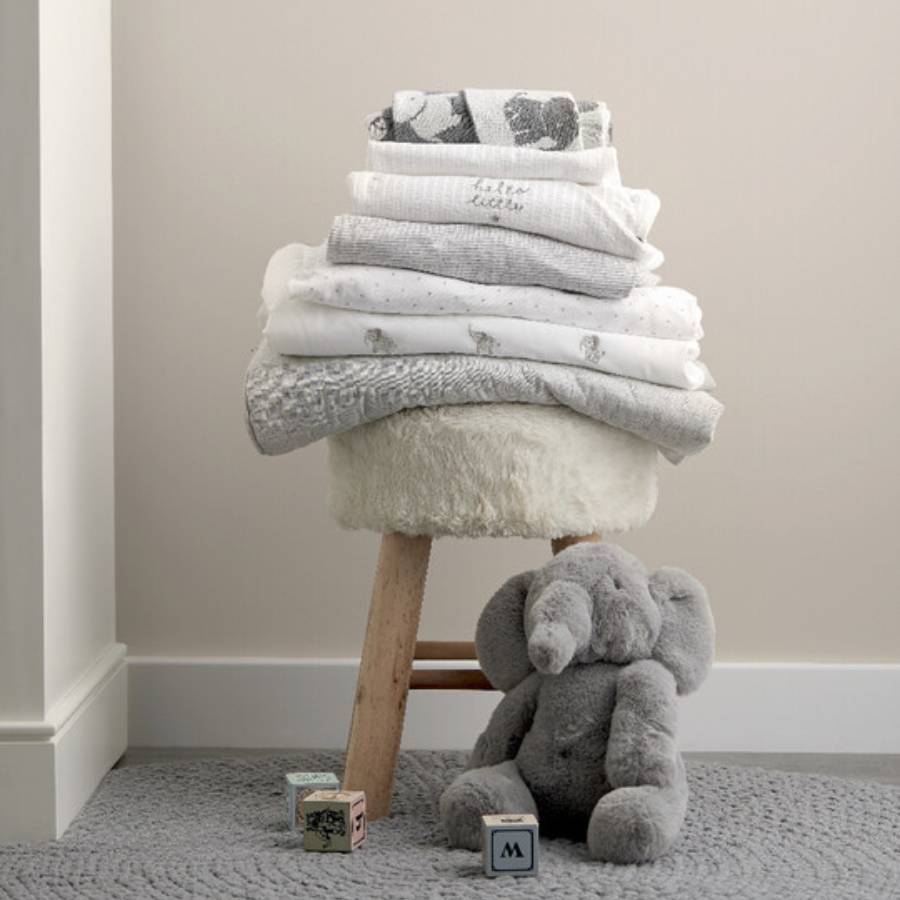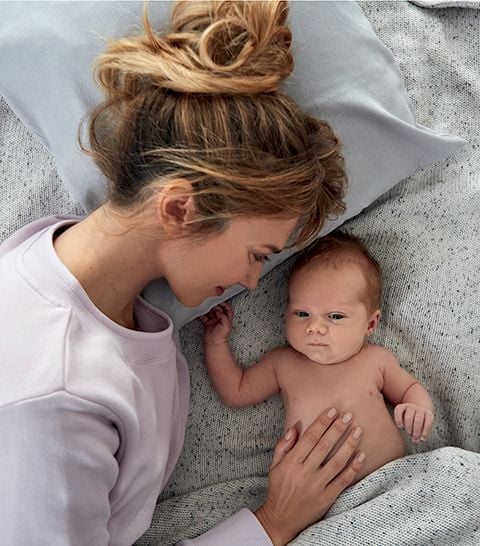
Why swaddle your baby?
Swaddling mimics the cosy environment of the womb, providing babies with a sense of security and comfort. The tightly wrapped blanket makes the baby feel safe because during the last few months, they didn’t have much space in the womb and could only make limited movements. It can help in:
-
Soothing: Swaddling can help calm a fussy baby by reducing their startle reflex. It can be described as receiving a big hug. When swaddling is combined with other baby-soothing techniques such as swaying, it will keep your baby calm.
-
Sleep Improvement: Swaddled babies tend to sleep better and longer due to the feeling of security.
-
Reducing SIDS Risk: Properly swaddling can promote safe sleep by preventing loose bedding around the baby.
How long do you swaddle a baby?
From newborn age to about 2 - 3 months of age. Once your little one starts to show signs of rolling over or starting to resist, it may be time to transition out of the swaddle.

Step-by-step guide to swaddle a baby:
The easiest way to get started with swaddling is using a ready-made swaddle sleeping bag or swaddle wrap. You can also keep things simple by using a large, breathable cloth. Nurses at the hospital or pediatrician’s clinic can give you a one-on-one tutorial on how to properly wrap a baby into a swaddle or you can follow the below detailed guide to help you through. All you need is a swaddle cloth, a flat surface and your little bundle of joy ready for their snug wrap.
Step 1: Prepare the blanket
Lay the blanket on a flat surface, forming a diamond shape with one corner pointing towards you. Fold the top corner down slightly to create a straight edge.
Step 2: Place the baby
Lay your baby face-up on the blanket, with their shoulders just below the top edge. Ensure your baby's head is above the fold. A good tip to remember during this time is avoid the fabric touching your little one’s cheek as they might confuse it with a breast which would set off a rooting reflex and they might start crying with confusion when not fed.
Step 3: Secure arms
Gently hold your baby's left arm against their body and pull the left corner of the blanket across their body, tucking it snugly under their right side. Leave the right arm free for now.
Step 4: Wrap the right side
Fold the bottom corner of the blanket up over your baby's feet, tucking it snugly behind their shoulder. Now, hold your baby's right arm against their body and wrap the right corner of the blanket across, tucking it under their left side.
Step 5: Secure the bottom
Fold or twist the remaining fabric at the bottom of the blanket loosely around your baby's legs, allowing for natural hip movement. If the tuck in loosens easily, swap out with a new blanket for a proper fit.
Step 6: Safety check
Ensure the swaddle isn't too tight around your baby's hips, as this can lead to hip dysplasia. The legs should be able to bend up and out at the hips.

Swaddling tips and precautions to keep in mind
-
Place baby on its back: Remember to place your little one of their back instead of their stomach. You can make sure that they don’t roll over by swaddling them on a flat smooth surface. Once they start showing signs of rolling over, stop swaddling immediately.
-
Remove plush toys or items from baby’s crib: Your little one’s sleeping space should be free of any loose bedding, stuffed animals, blankets or pillows.
-
Look out for signs of overheating: If your baby is flushed, breathing heavily or sweating, they may need to loose a layer. Using a lighter and breathable fabric will also ensure a more comfortable experience for your little one.
-
Swaddle your baby snugly, not too tight: When wrapping your baby, make sure that the swaddle is not too tight. Leave some space to allow room for natural movement of hips. Tight swaddles can restrict movement and cause hip problems in the future.
My baby doesn’t like swaddling, what should I do?
When your infant was in the womb, their resting position was with their arms up by their faces. This is why when you try to bring them down, they might resist. Start by applying gentle but constant pressure on their arms to slowly straighten them, this will ease your little one into swaddling.
If your new born is content on their own without swaddling, you can skip the technique altogether. However, for fussier babies, swaddling is one of the best ways to calm them down.

When to stop swaddling?
As your little one gets older, they will soon grow out of swaddling. You can test if they are ready to sleep without their swaddle blanket by wrapping them with one arm up and out of the blanket. If they start crying or making a fuss, they still need to be swaddled to sleep. But if they are comfortable with this position, you can start transitioning them out after a week.
In case your baby starts showing any signs of rolling over or any attempts, you should immediately stop swaddling. Sleeping face down with loose bedding will increase the risk of SIDS and suffocation.
Swaddling is an age-old technique that can bring comfort and calmness to both babies and parents. Although it might need some practice and patience at the beginning, It's a tool that assists in creating a safe sleep environment for your little one. As you go through the parenting journey, we at Mamas and Papas always have your back with the latest products and parenting advice to help you give your best to your little bundles of joy.




